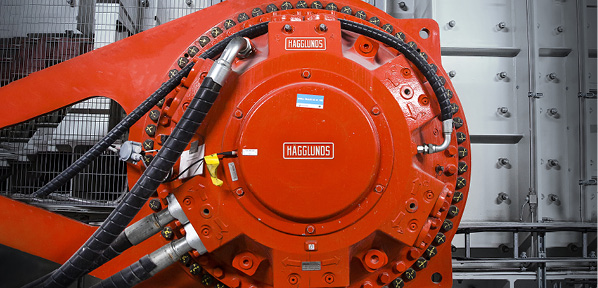Machine Troubleshooting – A Vital But Shrinking Industry Skill

Troubleshooters are highly skilled workers, but they are becoming an increasingly rare breed in the workforce. We sat down with managers from several large manufacturers to discuss the problem of finding qualified troubleshooters, and they explained that in the past, training courses only taught the basics, while the real troubleshooting skills were learned on-the-job over a long time period of shadowing highly skilled, experienced maintenance personnel. Unfortunately, the majority of these highly skilled workers are leaving the workforce for a well-deserved retirement, and an insufficient number of new maintenance workers have that valuable skill set.
The real issue is that effective troubleshooting is essential for any manufacturer to stay competitive in today’s tough market. Quick and effective machine troubleshooting is vital to keep paper-thin profit margins from slipping into the red. This places a huge responsibility on technical instructors to prepare workers to hit the ground running on day one. Long gone are the days of a machine sitting idle for long periods of time while troubleshooters substituted one component after another based on their personal experience or conjecture.
Since the practice of allowing promising young troubleshooters to spend years acquiring skills on the job is not feasible, teaching these skills in a classroom environment is essential. Future technicians and operators must gain real-world troubleshooting experience before they reach the production floor. Therefore, institutions such as community colleges and company training centers must be able to create equipment issues in many combinations to build troubleshooting expertise. Use of training equipment with the ability to insert a wide range of realistic faults into a system is critical so that workers can gain hands-on experience diagnosing and fixing the broad range of problems seen in the real world. More so, to ensure that proper troubleshooting procedures are being taught, a troubleshooting training program should use an industry-vetted curriculum that ensures consistent outcomes of every worker.
Community colleges and industrial training centers are stepping up to meet this challenge with programs geared specifically toward teaching troubleshooting skills. While these programs may vary in teaching methods, effective troubleshooting, regardless of the specific technology, follows five basic steps:
- Step 1: Identify the symptoms.
- Step 2: Isolate the problem to a particular component.
- Step 3: Test the suspected component.
- Step 4: Repair or replace the component.
- Step 5: Test the system.
Identifying a malfunctioning machine’s symptoms is absolutely critical because it can shorten the troubleshooting process by placing the focus on only those components capable of causing those particular problems. Teaching future troubleshooters to first ask the operator to identify any observed symptoms in a malfunctioning machine is essential. Let’s face it: no matter how well a troubleshooter is trained, the operators that daily run and monitor that particular machine are vastly more familiar with its operation than anyone else, and their input is critical at this stage. Too often, inexperienced troubleshooters assume they know the answer when they truly don’t understand the question. When training troubleshooters, it is important to teach them not to overlook this extremely valuable resource. Once operators have identified the machine’s specific symptoms, drawing useful conclusions concerning the fault that is causing the problem is much simpler.
Categorizing the probable fault based on the symptoms focuses a troubleshooter’s efforts to a significantly smaller area, which saves valuable time and money. For example, a well-trained troubleshooter should be able to quickly categorize the problem into machine sequence, machine performance, or system-related issues.
- Machine Sequence relates to the order in which events occur, including actuator movements, pressure changes, or speed changes.
- Machine Performance refers to characteristics of an actuator’s motion or output, such as speed or force output.
- System-Related Issues denotes overall system characteristics, such as vibration, fluid temperature, overall system pressure, fluid leaks, etc.
For instance, let’s consider a fluid power system to see how categorizing the fault is helpful. Machine sequence faults point to problems with components that control movement, such as sensors, directional control valves, or a PLC controller. Conversely, machine performance faults are commonly caused by output components or components that affect output, such as pressure-reducing valves, relief valves, or pumps. Symptoms that fall into these two categories can quickly narrow troubleshooting efforts to specific machine areas and parts. When system-related faults, such as leaks, are reported, these point to issues likely to cause machine failure. In some cases, system-related faults accompany a sequence or performance fault, and they are helpful indicators of what may be causing the problem. This systematic approach focuses the troubleshooter on the problem quickly.
Once the problem is categorized, a testing methodology should be used to properly identify the failed component:
- The Shotgun method tests every component or connection in affected areas until the problem is located (movements, pressure changes, or speed).
- The Half-Split method continually tests a point halfway between a known good test point and a known bad test point until the problem is identified.
- The Output-Back method starts testing the system outputs and systematically works back towards the inputs until the problem is located.
- The Symptom and Cause method isolates the problem according to whether or not the component could cause the observed symptoms.
Many highly skilled troubleshooters recommend the Symptom and Cause method as the most effective. Teaching troubleshooters to focus only on those components capable of causing the observed symptoms saves time, which is why proper identification of a machine’s symptoms is critical. For this method to be effective, troubleshooters must not only understand a component’s function, but also how it operates internally to achieve that function. Once the faulty component is identified through in-circuit testing, it should be tested out of circuit to verify its failure. One parts manufacturer stated that nearly 70% of its returned parts were not defective. Out-of-circuit testing isolates the component from the rest of the system and can prevent time wasted in replacing the wrong component.
Testing the system’s operation once the problem is “fixed” is the last step before signing off the job ticket and walking away from a machine repair. The following example illustrates the importance of this step. A hydraulic system’s main relief valve was replaced, and the system was checked for leakage. However, once the maintenance personnel left, the machine operator attempted to adjust the valve to the proper system pressure only to discover that they were unable to do so because the wrong replacement valve had been installed. This resulted in yet more downtime and almost doubled the labor cost to fix it.
Industry needs many more troubleshooters than exist today. As manufacturers strive to create quality products in less time than ever, they are facing a desperate need for these skilled workers. Community colleges and industry training centers are teaching these skills today; we just need a lot more of it.







